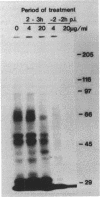Abstract
Screening of plant extracts found that a biflavone from Cephalotaxus drupacea, which was found to be ginkgetin, is active against herpes simplex virus type 1 (HSV-1). This compound caused dose-dependent inhibition of virus replication with a 50% cytotoxic activity at 12.8 micrograms/ml and 50% anti-HSV-1 activity at 0.91 micrograms/ml, the therapeutic index being 14.1. Ginkgetin also showed inhibitory effects against HSV type 2 and human cytomegalovirus with therapeutic indices of 13.8 and 11.6, respectively. Ginkgetin had a weak virucidal activity against HSV-1 at more than 5 micrograms/ml. Both adsorption of HSV-1 to host cells and virus penetration into cells were unaffected by this agent. Ginkgetin suppressed viral protein synthesis when added at various steps of HSV-1 replication and exerted strong inhibition of transcription of the immediate-early genes.
Full text
PDF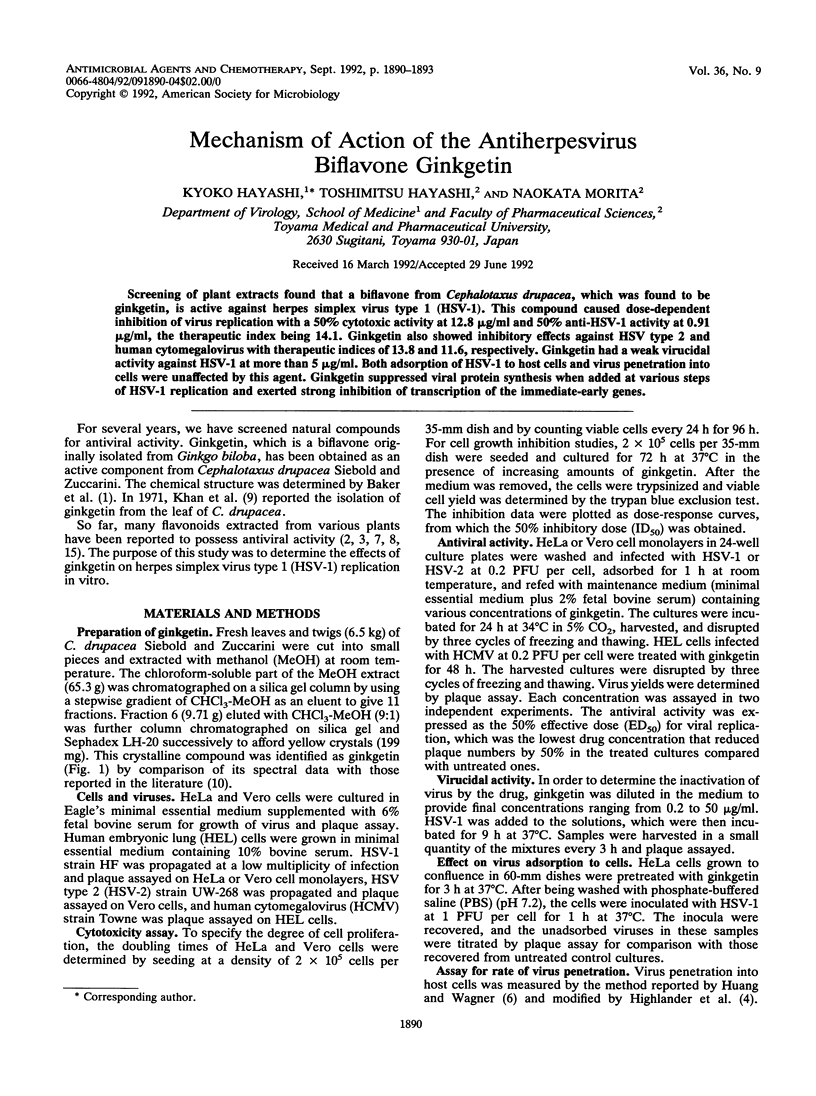
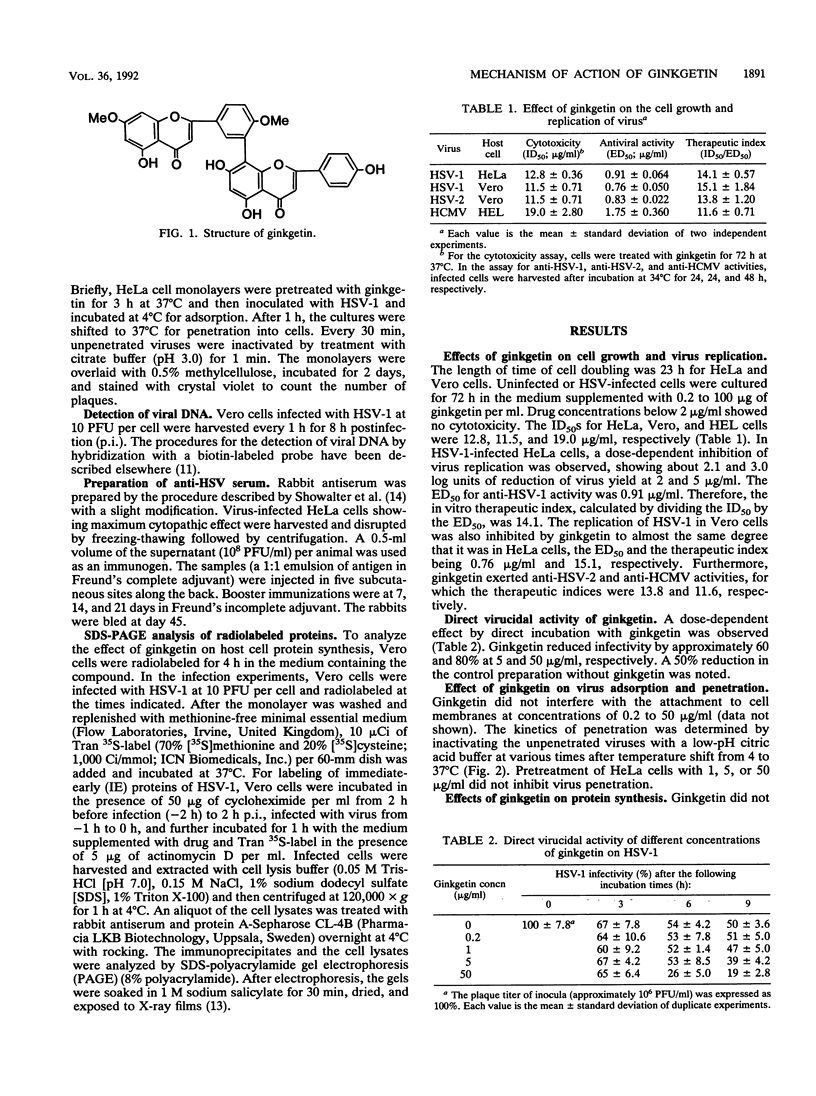
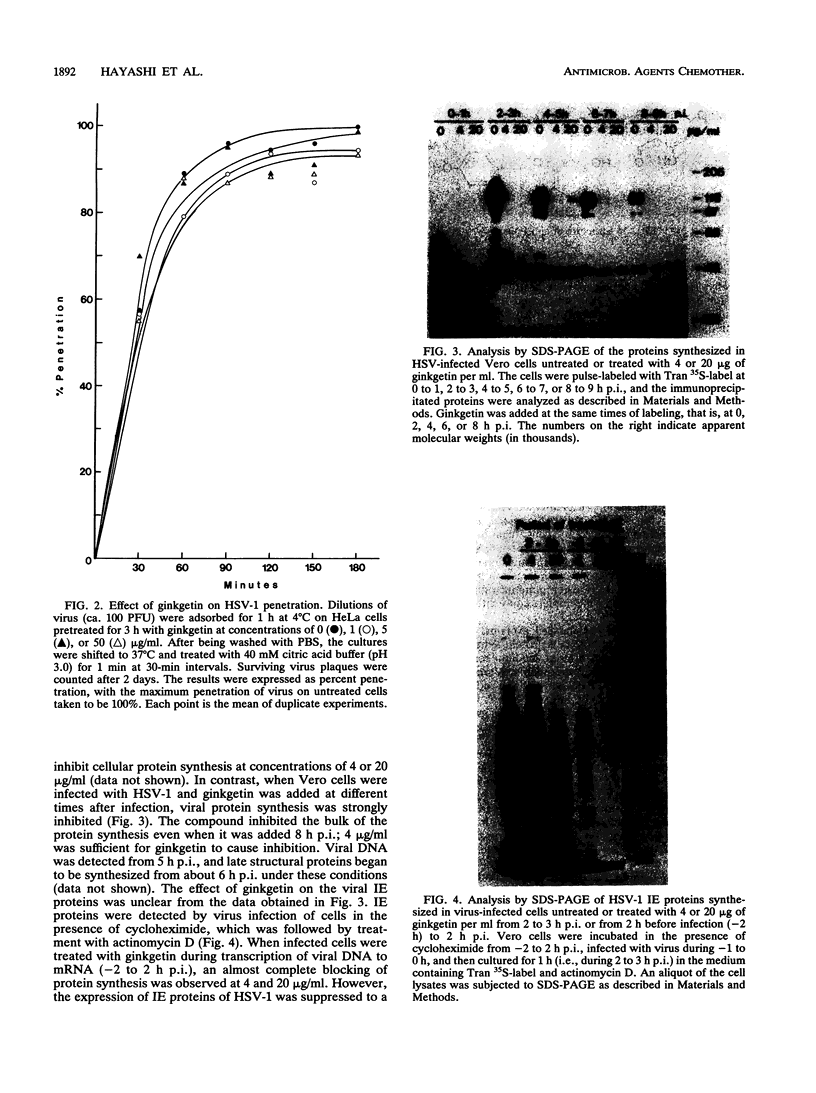
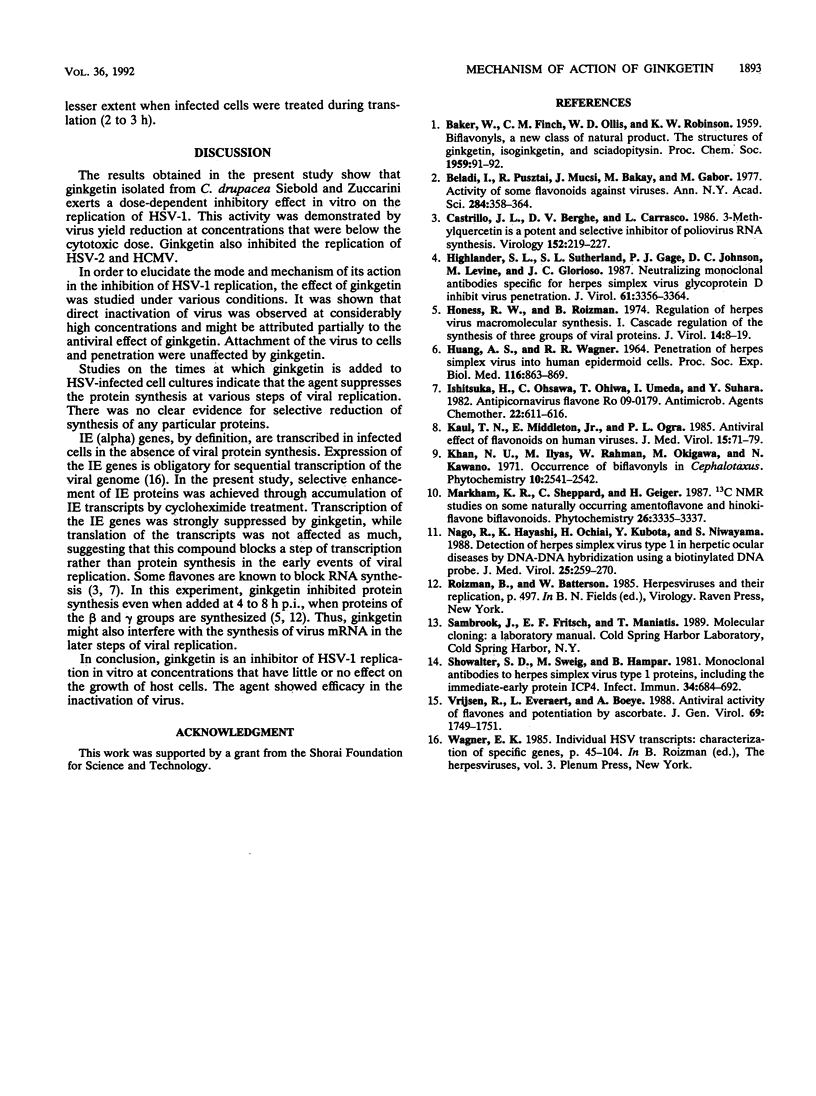
Images in this article
Selected References
These references are in PubMed. This may not be the complete list of references from this article.
- Béládi I., Pusztai R., Mucsi I., Bakay M., Gábor M. Activity of some flavonoids against viruses. Ann N Y Acad Sci. 1977 Mar 4;284:358–364. doi: 10.1111/j.1749-6632.1977.tb21971.x. [DOI] [PubMed] [Google Scholar]
- Castrillo J. L., Vanden Berghe D., Carrasco L. 3-Methylquercetin is a potent and selective inhibitor of poliovirus RNA synthesis. Virology. 1986 Jul 15;152(1):219–227. doi: 10.1016/0042-6822(86)90386-7. [DOI] [PubMed] [Google Scholar]
- HUANG A. S., WAGNER R. R. PENETRATION OF HERPES SIMPLEX VIRUS INTO HUMAN EPIDERMOID CELLS. Proc Soc Exp Biol Med. 1964 Aug-Sep;116:863–869. doi: 10.3181/00379727-116-29392. [DOI] [PubMed] [Google Scholar]
- Highlander S. L., Sutherland S. L., Gage P. J., Johnson D. C., Levine M., Glorioso J. C. Neutralizing monoclonal antibodies specific for herpes simplex virus glycoprotein D inhibit virus penetration. J Virol. 1987 Nov;61(11):3356–3364. doi: 10.1128/jvi.61.11.3356-3364.1987. [DOI] [PMC free article] [PubMed] [Google Scholar]
- Honess R. W., Roizman B. Regulation of herpesvirus macromolecular synthesis. I. Cascade regulation of the synthesis of three groups of viral proteins. J Virol. 1974 Jul;14(1):8–19. doi: 10.1128/jvi.14.1.8-19.1974. [DOI] [PMC free article] [PubMed] [Google Scholar]
- Ishitsuka H., Ohsawa C., Ohiwa T., Umeda I., Suhara Y. Antipicornavirus flavone Ro 09-0179. Antimicrob Agents Chemother. 1982 Oct;22(4):611–616. doi: 10.1128/aac.22.4.611. [DOI] [PMC free article] [PubMed] [Google Scholar]
- Kaul T. N., Middleton E., Jr, Ogra P. L. Antiviral effect of flavonoids on human viruses. J Med Virol. 1985 Jan;15(1):71–79. doi: 10.1002/jmv.1890150110. [DOI] [PubMed] [Google Scholar]
- Nago R., Hayashi K., Ochiai H., Kubota Y., Niwayama S. Detection of herpes simplex virus type 1 in herpetic ocular diseases by DNA-DNA hybridization using a biotinylated DNA probe. J Med Virol. 1988 Jul;25(3):259–270. doi: 10.1002/jmv.1890250303. [DOI] [PubMed] [Google Scholar]
- Showalter S. D., Zweig M., Hampar B. Monoclonal antibodies to herpes simplex virus type 1 proteins, including the immediate-early protein ICP 4. Infect Immun. 1981 Dec;34(3):684–692. doi: 10.1128/iai.34.3.684-692.1981. [DOI] [PMC free article] [PubMed] [Google Scholar]
- Vrijsen R., Everaert L., Boeyé A. Antiviral activity of flavones and potentiation by ascorbate. J Gen Virol. 1988 Jul;69(Pt 7):1749–1751. doi: 10.1099/0022-1317-69-7-1749. [DOI] [PubMed] [Google Scholar]




